Reviews
Sisters of Satan
Juan L. Moctezuma
Mexico, 1978
Credits
Review by Thomas Scalzo
Posted on 12 October 2011
Source Mondo Macabro DVD
Categories 31 Days of Horror VIII
Ah, the Mexican horror film. Like the lure of the siren’s song, never what it appears to be, yet who among us can resist? From masked wrestlers to Aztec mummies to inexplicable amalgams of slashers, demons, and folklore fiends, the genre efforts from south of the border are surprising, entertaining, and a reliable source of joyous bewilderment.
With such a varied pool of material from which to choose, however, narrowing the field to four selections was a difficult task. In the end, we decided to steer clear of the most bizarre offerings, and leave the coverage of the mass of wrestler films for another day. Instead, we chose to focus on a few relatively straightforward Mexican horror titles that represent Mexican filmmakers successfully putting their own memorable spin on well-established horror subgenres. Thus will our month-long adventure bring us to the wonderfully atmospheric hacienda of a sophisticated vampire story; to the creepy convent of a demonic possession tale; and to the Mexican suburbs of an endlessly amusing supernatural slasher film. So check back each Wednesday as we continue our search for horror treasures from south of the border.
At its core, the story of Alucarda is fairly straightforward: two young girls become possessed by the devil, and a stalwart community of priests and nuns do their best to save the girls’ souls. Were this a second-rate Spanish-language rehash of The Exorcist, such a plot could have easily devolved into a pedantic, dialogue-heavy foray into the nature of good and evil. But in the hands of Mexican horror stylist Juan L. Moctezuma, such material serves merely a jumping off point for a relentless, atmospheric tale of hunchbacked demons, naked blood pacts, sadistic exorcism ceremonies, and regular outbursts of outrageous, sacrilegious action.
The story begins within the confines of an ominous earthen enclosure, with a young woman giving birth to a baby girl as the creepy stone faces of statues stare impassively down at her. Realizing she is going to die, she implores a nearby woman to take the child. Years later, we find ourselves in a nearby convent, young Alucarda having spent her formative years under the watchful eyes of the nuns. But it seems that the nuns haven’t done a very good job. For within moments of meeting our title character we jump right into the madness: Alucarda approaches recently orphaned Justine, tells her they are best friends, and two set about stealing a demonic knife from a goat-faced carny. Before you know it, the girls are using the knife to pledge their bloody allegiance to the devil.
Although the film’s notoriety is largely centered on its stream of blasphemous scenarios, it is this breakneck pacing that ultimately makes it enjoyable, especially to modern viewers. For after digesting multiple decades’ worth of movies dealing with demonic possession, sitting through another film intent on ponderously unraveling the mysteries of possession and exorcism is not an exciting proposition. Thankfully, Alucarda has no such aims. In Moctezuma’s world, the Devil exists. Possession exists. And when a convent full of pious priests and nuns come face to face with the violent servants of Old Scratch, the only possible outcome is a bloody, chaotic climax.
At the center of this maelstrom is the figure of Alucarda. Forever dressed in black, her pitch-colored hair combed menacingly forward, Alucarda flits like a ghost about the convent grounds, appearing and disappearing seemingly at will. Though she deigns to participate in the daily religious rituals with the other girls, she stands out like a sore thumb, her striking hair, wardrobe, and vibrant sexuality contrasting starkly with the bland chastity of her peers. Either born under a bad sign, or possessed at birth, the girl has seemingly always been touched by darkness, barely suppressing an evil smoldering just beneath the disquieting surface of her soul. In other words, she is the perfect vessel for Satan’s machinations.
Once it becomes clear that The Devil has a foothold in their domain, priests and nuns realize they must act, and the film ostensibly takes a serious turn. Yet the outlandishness of the good versus evil battles makes them more exciting than vindicating, and the constant dose of exaggerated actions and words instills all that follows with an unintentional humor. For starters, we have the faceless acolytes who wait on the head priest hand and foot, always at the ready with either an oversized bible, open to the exact page required, or a ludicrously large sword, when words just aren’t doing the trick anymore.
Equally amusing are the diatribes aimed at getting to the heart of the problem. When the head priest of the order realizes what is happening at the convent, for example, he addresses his followers with a proclamation dominated by a pregnant pause: “We must prepare… an exorcism!” Likewise, when a more detailed understanding of the problem is required, he once again mounts his soapbox and somberly pronounces: “These are the doings of the transgressor… the seducer… the enemy of virtue… the perpetual persecutor of innocence… the archenemy of almighty God.” To which the local doctor adds the utterly unnecessary clarifier: “You mean… The Devil.”
And Tina Romero as Alucarda does her best to exude every ounce of ludicrously violent insanity from the title character. Whether baring all in a surreal blood ritual, screaming hysterically at the glimpse of a cross, or setting the convent on fire, the girl’s every action is outsized, captivating, and, ultimately, humorous. Again, it is possible here that Moctezuma meant to use Alucarda’s character to tackle a serious subject, namely to personify the world’s collective fear of unbridled female sexuality. But the very character traits that would have engendered such thoughts are so embellished, and the pacing of the majority of the film so frantic, that we have little chance to contemplate such ideas.
Thus, despite being rife with proselytizing, denouncement, and condemnation, Alucarda never truly feels to be a tale about messages or morals. Instead, it’s a film content to use religion and all its attendant prejudices, superstitions, and rituals, as a backdrop for a visually striking and dramatically engaging story. The cavernous convent, the eerie crypt, and the deceptively idyllic woodland, combine to create a wonderfully rich world. The larger-than-life figures, both good and evil, populate that world with entertaining, unpredictable characters. And Alucarda herself - beautiful, terrible, and fascinating - inexorably draws everyone and everything in this world to a fiery and magnificently frenzied end.
More 31 Days of Horror VIII
-

Westworld
1973 -

Child’s Play
1988 -

Jacob’s Ladder
1990 -

Willy Wonka and the Chocolate Factory
1971 -
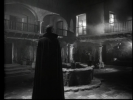
El Vampiro
1957 -
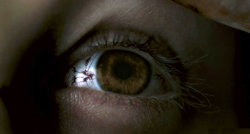
28 Weeks Later
2007 -

Piranha II: The Spawning
1981 -
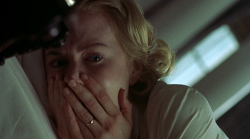
The Others
2001 -

Quatermass and the Pit
1967 -

I Know Who Killed Me
2007 -

Bride of Re-Animator
1990 -

Alucarda
1978 -

Kakashi
2001 -

Seizure
1974 -

Night of the Living Dead
1968 -

Night of the Living Dead
1990 -

The Bat Whispers
1930 -

Miracle Mile
1988 -

Tintorera
1977 -

Paradise Lost
1996 -

The Cars that Ate Paris
1974 -

Ginger Snaps
2000 -
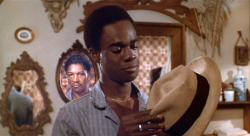
J.D.’s Revenge
1976 -
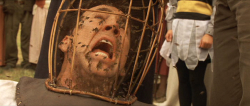
The Wicker Man
2006 -

Black Water
2007 -

Don’t Panic
1988 -

The Driller Killer
1979 -

Targets
1968 -

Mahal
1949 -

Event Horizon
1997
We don’t do comments anymore, but you may contact us here or find us on Twitter or Facebook.



